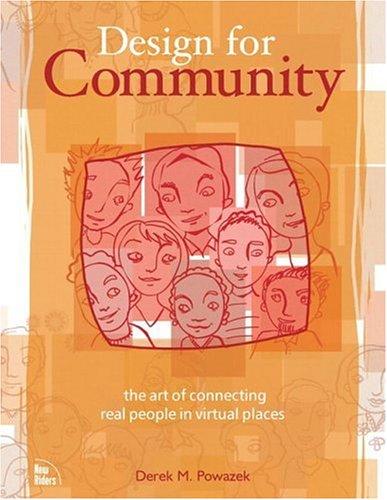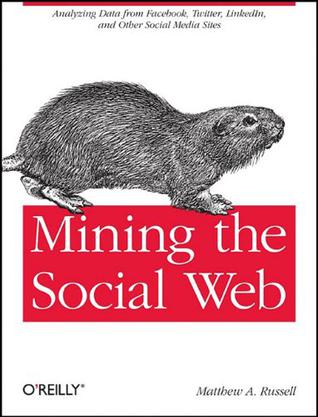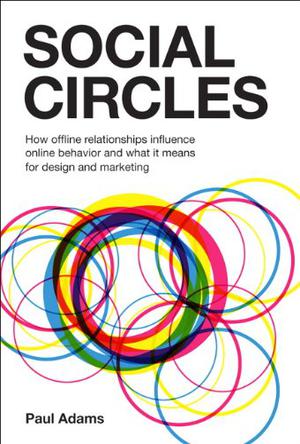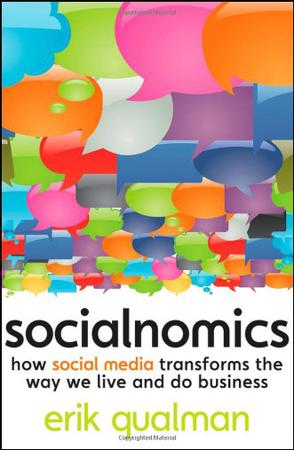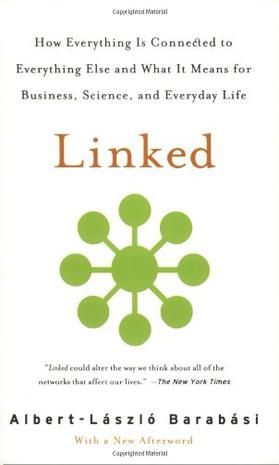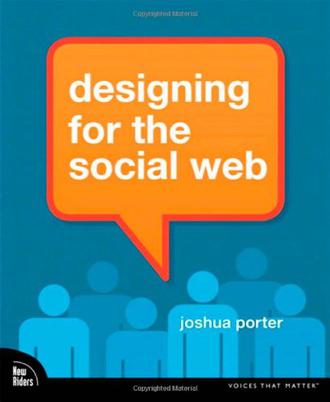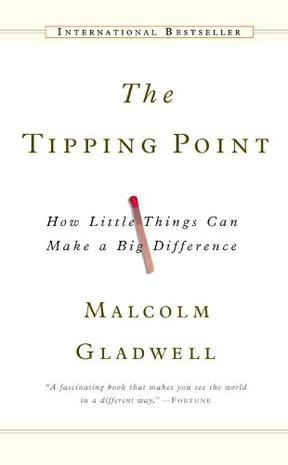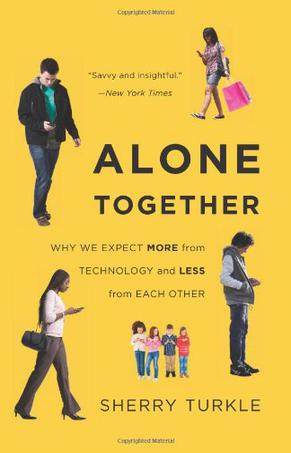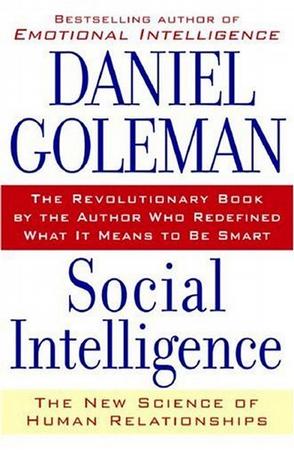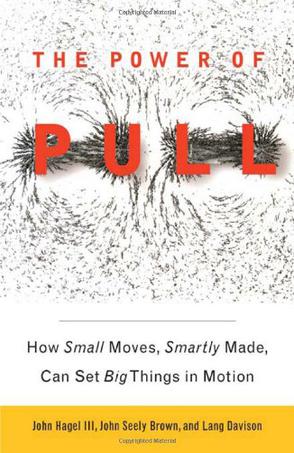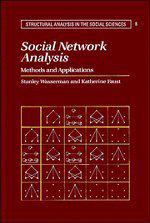欢迎来到相识电子书!
标签:social
-
Groundswell
Corporate executives are struggling with a new trend: people using online social technologies (blogs, social networking sites, YouTube, podcasts) to discuss products and companies, write their own news, and find their own deals. This groundswell is global, it s unstoppable, it affects every industry and it s utterly foreign to the powerful companies running things now. When consumers you ve never met are rating your company s products in public forums with which you have no experience or influence, your company is vulnerable. In Groundswell, Charlene Li and Josh Bernoff of Forrester, Inc. explain how to turn this threat into an opportunity. Using tools and data straight from Forrester, you ll learn how to: -Evaluate new social technologies as they emerge -Determine how different groups of consumers are participating in social technology arenas -Apply a four-step process for formulating your future strategy -Build social technologies into your business including monitoring your brand value, talking with the groundswell through marketing and PR campaigns, and energizing your best customers to recruit their peers Timely and insightful, this book is required reading for executives seeking to protect and strengthen their company s public image. -
Smart Mobs
How the convergence of mobile communications and computing is driving the next social revolution-transforming the ways in which people meet, mate, work, buy, sell, govern, and create. When Howard Rheingold sneaks off down an untrodden trail, everyone else follows. He is always onto something marvelous no one has seen before. An ever-considerate guide, he navigates this new world with ease, compassion, and grace, and gives you the inside story, with no punches pulled. Tech talk? Howard could get your mother to understand. From Tokyo to Helsinki, Manhattan to Manila, Howard Rheingold takes us on a journey around the world for a preview of the next techno-cultural shift-a shift he predicts will be as dramatic as the widespread adoption of the PC in the 1980s and the Internet in the 1990s. The coming wave, says Rheingold, is the result of super-efficient mobile communications-cellular phones, personal digital assistants, and wireless-paging and Internet-access devices that will allow us to connect with anyone, anywhere, anytime. From the amusing ("Lovegetty" devices in Japan that light up when a person with the right date-potential characteristics appears in the vicinity) to the extraordinary (the overthrow of a repressive regime in the Philippines by political activists who mobilized by forwarding text messages via cell phones), Rheingold gives examples of the fundamentally new ways in which people are already engaging in group or collective action. He also considers the dark side of this phenomenon, such as the coordination of terrorist cells, threats to privacy, and the ability to incite violent behavior. Applying insights from sociology, artificial intelligence, engineering, and anthropology, Rheingold offers a penetrating perspective on the brave new convergence of pop culture, cutting-edge technology, and social activism. At the same time, he reminds us that, as with other technological revolutions, the real impact of mobile communications will come not from the technology itself but from how people use it, resist it, adapt to it, and ultimately use it to transform themselves, their communities, and their institutions. -
Mining the Social Web
Popular social networks such as Facebook, Twitter, and LinkedIn generate a tremendous amount of valuable social data. Who's talking to whom? What are they talking about? How often are they talking? Where are they located? This concise and practical book shows you how to answer these types of questions and more. Each chapter presents a soup-to-nuts approach that combines popular social web data, analysis techniques, and visualization to help you find the needles in the social haystack you've been looking for -- and some you didn't know were there. With Mining the Social Web, intermediate-to-advanced Python programmers will learn how to collect and analyze social data in way that lends itself to hacking as well as more industrial-strength analysis. The book is highly readable from cover to cover and tells a coherent story, but you can go straight to chapters of interest if you want to focus on a specific topic. Get a concise and straightforward synopsis of the social web landscape so you know which 20% of the space to spend 80% of your time on Use easily adaptable scripts hosted on GitHub to harvest data from popular social network APIs including Twitter, Facebook, and LinkedIn Learn how to slice and dice social web data with easy-to-use Python tools, and apply more advanced mining techniques such as TF-IDF, cosine similarity, collocation analysis, document summarization, and clique detection Build interactive visualizations with easily adaptable web technologies built upon HTML5 and JavaScript toolkits This book is still in progress, but you can get going on this technology through our Rough Cuts edition, which lets you read the manuscript as it's being written, either online or via PDF. via http://oreilly.com/catalog/9781449394844/ Amazon: http://www.amazon.com/Mining-Social-Web-Finding-Haystack/dp/1449388345/ -
Social Circles
Businesses are starting to operate in the world of the social web, but most have a very poor understanding of social interaction, and its huge impact on how successful their endeavors will be. It is much more complicated than just business blogs or official company Twitter accounts. Most of people's interactions with each other and with brands happen offline, away from computers, and often away from mobile phones. What people do offline has a huge impact on what they do online. Social Circles, by lead researcher for social media Paul Adams, is about helping business understand this offline/online relationship. Research has shown time and again how people have multiple independent circles of friends, all of whom they trust in different ways, and all of whom wield varying degrees of influence. People are using social networks to interact with people they already know offline, and not to make new connections with people they don’t know. They are recreating their offline social circles online. Understanding these social circles is the key to successful behavioral advertising. -
Socialnomics
A fascinating, research-based look at the impact of social media on businesses and consumers around the world, and what's in store for the future Social Media. You've heard the term, even if you don't use the tools. But just how big has social media become? Social media has officially surpassed pornography as the top activity on the Internet. People would rather give up their e-mail than their social network. It is so powerful that it is causing a macro shift in the way we live and conduct business. Brands can now be strengthened or destroyed by the use of social media. Online networking sites are being used as giant, free focus groups. Advertising is less effective at influencing consumers than the opinions of their peers. If you aren't using social media in your business strategy, you are already behind your competition. Explores how the concept of "Socialnomics" is changing the way businesses produce, market, and sell, eliminating inefficient marketing and middlemen, and making products easier and cheaper for consumers to obtain Learn how successful businesses are connecting with consumers like never before via Twitter, Facebook, YouTube, and other social media sites A must-read for anyone wanting to learn about, and harness the power of social media, rather than be squashed by it Author Erik Qualman is a former online marketer for several Top 100 brands and the current Global Vice President of Online Marketing for the world's largest private education firm Socialnomics is essential book for anyone who wants to understand the implications of social media, and how businesses can tap the power of social media to increase their sales, cut their marketing costs, and reach consumers directly. From the Inside Flap Social Media. Social media platforms like Facebook, YouTube, and Twitter are fundamentally changing the way businesses and consumers behave, connecting hundreds of millions of people to each other via instant communication. This is a massive socio-economic shift that is fundamentally changing the way consumers and companies communicate and interact with each other. Welcome to the world of Socialnomicswhere consumers and the societies they create online have a profound influence on our economy and the businesses that operate within it. Online word of mouth and the powerful influence of peer groups have already made many traditional marketing strategies obsolete. Today's best businesses and marketers are learning to profitably navigate this new landscape. Brands can now be strengthened or destroyed by the use of social media. Advertising is less effective at influencing consumers than are the opinions of their peers, making direct-to-consumer marketing messages less valuable each day. But savvy companies are using online networking sites as massive focus groups and as an efficient means of communication with consumers. If social media isn't a part of your business strategy, you've already fallen behind the curveand your competition. In Socialnomics, Erik Qualman offers a fascinating look at the impact of social media on business to reveal what the future holds and how businesses can best take advantage of it. He explores how social media is changing the way businesses produce, market, and sell products; how it eliminates inefficient marketing tactics and middlemen; and how businesses are connecting directly with their customers through popular social media platforms. Social media will continue to change the way businesses market products and how consumers and businesses interact with each other. If you're a marketer or business owner, the big question is whether you'll keep up with those changes. Socialnomics is an essential resource for anyone who wants to understand the implications of social media, and how to tap its power to increase sales, cut marketing costs, and communicate directly with consumers. 点击链接进入中文版: 颠覆:社会化媒体改变世界 -
The Filter Bubble
In December 2009, Google began customizing its search results for each user. Instead of giving you the most broadly popular result, Google now tries to predict what you are most likely to click on. According to MoveOn.org board president Eli Pariser, Google's change in policy is symptomatic of the most significant shift to take place on the Web in recent years-the rise of personalization. In this groundbreaking investigation of the new hidden Web, Pariser uncovers how this growing trend threatens to control how we consume and share information as a society-and reveals what we can do about it.Though the phenomenon has gone largely undetected until now, personalized filters are sweeping the Web, creating individual universes of information for each of us. Facebook-the primary news source for an increasing number of Americans-prioritizes the links it believes will appeal to you so that if you are a liberal, you can expect to see only progressive links. Even an old-media bastion like T -
Linked
A cocktail party. A terrorist cell. Ancient bacteria. An international conglomerate. All are networks, and all are a part of a surprising scientific revolution. Albert-László Barabási, the nation's foremost expert in the new science of networks, takes us on an intellectual adventure to prove that social networks, corporations, and living organisms are more similar than previously thought. Grasping a full understanding of network science will someday allow us to design blue-chip businesses, stop the outbreak of deadly diseases, and influence the exchange of ideas and information. Just as James Gleick brought the discovery of chaos theory to the general public, Linked tells the story of the true science of the future. -
The Social Logic of Space
The book presents a new theory of space: how and why it is a vital component of how societies work. The theory is developed on the basis of a new way of describing and analysing the kinds of spatial patterns produced by buildings and towns. The methods are explained so that anyone interested in how towns or buildings are structured and how they work can make use of them. The book also presents a new theory of societies and spatial systems, and what it is about different types of society that leads them to adopt fundamentally different spatial forms. From this general theory, the outline of a 'pathology of modern urbanism' in today's social context is developed. -
Designing For The Social Web
No matter what type of web site or application you’re building, social interaction among the people who use it will be key to its success. They will talk about it, invite their friends, complain, sing its high praises, and dissect it in countless ways. With the right design strategy you can use this social interaction to get people signing up, coming back regularly, and bringing others into the fold. With tons of examples from real-world interfaces and a touch of the underlying social psychology theory, Joshua Porter shows you how to design your next great social web application. Inside, you’ll discover: • The real reasons why people participate online and the psychology behind them • The Usage Lifecycle—or how people use your web application over time • How to get people past that trickiest of hurdles: sign-up • What to do when you’ve launched a web application and nobody is using it • How to analyze the effectiveness of your application screens and flows • How to grow your social web application from zero users to 1000—and beyond Designing for the social web is about much more than adding features. It’s about embracing the social interaction of the people who make you successful—and then designing smartly to encourage it. -
The Tipping Point
Book Description This celebrated New York Times bestsellernow poised to reach an even wider audience in paperbackis a book that is changing the way North Americans think about selling products and disseminating ideas. Gladwells new afterword to this edition describes how readers can constructively apply the tipping point principle in their own lives and work. Widely hailed as an important work that offers not only a road map to business success but also a profoundly encouraging approach to solving social problems. Amazon.com "The best way to understand the dramatic transformation of unknown books into bestsellers, or the rise of teenage smoking, or the phenomena of word of mouth or any number of the other mysterious changes that mark everyday life," writes Malcolm Gladwell, "is to think of them as epidemics. Ideas and products and messages and behaviors spread just like viruses do." Although anyone familiar with the theory of memetics will recognize this concept, Gladwell's The Tipping Point has quite a few interesting twists on the subject. For example, Paul Revere was able to galvanize the forces of resistance so effectively in part because he was what Gladwell calls a "Connector": he knew just about everybody, particularly the revolutionary leaders in each of the towns that he rode through. But Revere "wasn't just the man with the biggest Rolodex in colonial Boston," he was also a "Maven" who gathered extensive information about the British. He knew what was going on and he knew exactly whom to tell. The phenomenon continues to this day--think of how often you've received information in an e-mail message that had been forwarded at least half a dozen times before reaching you. Gladwell develops these and other concepts (such as the "stickiness" of ideas or the effect of population size on information dispersal) through simple, clear explanations and entertainingly illustrative anecdotes, such as comparing the pedagogical methods of Sesame Street and Blue's Clues, or explaining why it would be even easier to play Six Degrees of Kevin Bacon with the actor Rod Steiger. Although some readers may find the transitional passages between chapters hold their hands a little too tightly, and Gladwell's closing invocation of the possibilities of social engineering sketchy, even chilling, The Tipping Point is one of the most effective books on science for a general audience in ages. It seems inevitable that "tipping point," like "future shock" or "chaos theory," will soon become one of those ideas that everybody knows--or at least knows by name. --Ron Hogan From Publishers Weekly The premise of this facile piece of pop sociology has built-in appeal: little changes can have big effects; when small numbers of people start behaving differently, that behavior can ripple outward until a critical mass or "tipping point" is reached, changing the world. Gladwell's thesis that ideas, products, messages and behaviors "spread just like viruses do" remains a metaphor as he follows the growth of "word-of-mouth epidemics" triggered with the help of three pivotal types. These are Connectors, sociable personalities who bring people together; Mavens, who like to pass along knowledge; and Salesmen, adept at persuading the unenlightened. (Paul Revere, for example, was a Maven and a Connector). Gladwell's applications of his "tipping point" concept to current phenomena--such as the drop in violent crime in New York, the rebirth of Hush Puppies suede shoes as a suburban mall favorite, teenage suicide patterns and the efficiency of small work units--may arouse controversy. For example, many parents may be alarmed at his advice on drugs: since teenagers' experimentation with drugs, including cocaine, seldom leads to hardcore use, he contends, "We have to stop fighting this kind of experimentation. We have to accept it and even embrace it." While it offers a smorgasbord of intriguing snippets summarizing research on topics such as conversational patterns, infants' crib talk, judging other people's character, cheating habits in schoolchildren, memory sharing among families or couples, and the dehumanizing effects of prisons, this volume betrays its roots as a series of articles for the New Yorker, where Gladwell is a staff writer: his trendy material feels bloated and insubstantial in book form. Agent, Tina Bennett of Janklow & Nesbit. Major ad/promo. (Mar.) From Library Journal This genial book by New Yorker contributor Gladwell considers the elements needed to make a particular idea take hold. The "tipping point" (not a new phrase) occurs when something that began small (e.g., a few funky kids in New York's East Village wearing Hush Puppies) turns into something very large indeed (millions of Hush Puppies are sold). It depends on three rules: the Law of the Few, the Stickiness Factor, and the Power of Context. Episodes subjected to this paradigm here include Paul Revere's ride, the creation of the children's TV program Sesame Street, and the influence of subway shooter Bernie Goetz. The book has something of a pieced-together feel (reflecting, perhaps, the author's experience writing shorter pieces) and is definitely not the stuff of deep sociological thought. It is, however, an entertaining read that promises to be well publicized. Recommended for public libraries. -Ellen Gilbert, Rutgers Univ. Lib., New Brunswick, NJ From Booklist Gladwell, a New Yorker staff writer, offers an incisive and piquant theory of social dynamics that is bound to provoke a paradigm shift in our understanding of mass behavioral change. Defining such dramatic turnarounds as the abrupt drop in crime on New York's subways, or the unexpected popularity of a novel, as epidemics, Gladwell searches for catalysts that precipitate the "tipping point," or critical mass, that generates those events. What he finds, after analyzing a number of fascinating psychological studies, is that tipping points are attributable to minor alterations in the environment, such as the eradication of graffiti, and the actions of a surprisingly small number of people, who fit the profiles of personality types that he terms connectors, mavens, and salesmen. As he applies his strikingly counterintuitive hypotheses to everything from the "stickiness," or popularity, of certain children's television shows to the spread of sexually transmitted diseases, Gladwell reveals that our cherished belief in the autonomy of the self is based in great part on wishful thinking. Donna Seaman From AudioFile Why is it that fashion trends change the way we dress? Why do various TV shows, movies, and books become so popular? Malcolm Gladwell provides a diagram of our society, along with an analysis of the strategies people apply to influence and mold its direction. Gladwell describes the personality types that create trends and those that influence others by "spreading the word." History takes on a whole new perspective as he describes events of early America that specifically follow his theories of "selling the public on an idea" and "social epidemics." Feedback from market mavericks further substantiates Gladwell's viewpoints. B.J.P. Book Dimension length: (cm)17.2 width:(cm)10.8 点击链接进入中文版: 引爆点 -
Alone Together
Technology has become the architect of our intimacies. Online, we fall prey to the illusion of companionship, gathering thousands of Twitter and Facebook friends, and confusing tweets and wall posts with authentic communication. But this relentless connection leads to a new solitude. We turn to new technology to fill the void, but as MIT technology and society specialist Sherry Turkle argues, as technology ramps up, our emotional lives ramp down. Alone Together is the result of Turkle's nearly fifteen-year exploration of our lives on the digital terrain. Based on interviews with hundreds of children and adults, it describes new, unsettling relationships between friends, lovers, parents, and children, and new instabilities in how we understand privacy and community, intimacy and solitude. -
Social Intelligence
Emotional Intelligence was an international phenomenon, appearing on the New York Times bestseller list for over a year and selling more than five million copies worldwide. Now, once again, Daniel Goleman has written a groundbreaking synthesis of the latest findings in biology and brain science, revealing that we are “wired to connect” and the surprisingly deep impact of our relationships on every aspect of our lives. Far more than we are consciously aware, our daily encounters with parents, spouses, bosses, and even strangers shape our brains and affect cells throughout our bodies—down to the level of our genes—for good or ill. In Social Intelligence, Daniel Goleman explores an emerging new science with startling implications for our interpersonal world. Its most fundamental discovery: we are designed for sociability, constantly engaged in a “neural ballet” that connects us brain to brain with those around us. Our reactions to others, and theirs to us, have a far-reaching biological impact, sending out cascades of hormones that regulate everything from our hearts to our immune systems, making good relationships act like vitamins—and bad relationships like poisons. We can “catch” other people’s emotions the way we catch a cold, and the consequences of isolation or relentless social stress can be life-shortening. Goleman explains the surprising accuracy of first impressions, the basis of charisma and emotional power, the complexity of sexual attraction, and how we detect lies. He describes the “dark side” of social intelligence, from narcissism to Machiavellianism and psychopathy. He also reveals our astonishing capacity for “mindsight,” as well as the tragedy of those, like autistic children, whose mindsight is impaired. Is there a way to raise our children to be happy? What is the basis of a nourishing marriage? How can business leaders and teachers inspire the best in those they lead and teach? How can groups divided by prejudice and hatred come to live together in peace? The answers to these questions may not be as elusive as we once thought. And Goleman delivers his most heartening news with powerful conviction: we humans have a built-in bias toward empathy, cooperation, and altruism–provided we develop the social intelligence to nurture these capacities in ourselves and others. From the Trade Paperback edition. -
小圈子·大社交
网络正在脱离以内容为核心构建的方式,转向以人为核心重新构建。这样深远的变革将影响我们制定商业策略、设计以及营销和广告的方式。 本书作者先后在谷歌和Facebook供职,对于社交网络有深入的研究和丰富的实战经验。他以学术界和工业界最新的调查研究为基础,阐述了人们如何通过社交圈子相互联系的规律,探讨了理念和品牌信息如何通过社交网络传播开来的过程。书中介绍了许多实际的例子,通过这些鲜活的实例,你将掌握社交网络的秘密,知晓如何围绕社交行为来重塑业务模式,如何让你的产品为人们口耳相传。书中充满了作者的真知灼见,颠覆了一些传统的观念。 还等什么?让我们深入领悟社交网络中的心理学奥秘,让它指引我们成功地引爆流行。 -
社会心理学
《社会心理学》(英文版)(第8版)将基础研究与实践应用完美地结合在一起,以富有逻辑性的组织结构引领学生了解人们是如何思索、影响他人并与他人建立联系的。是人们了解自身、了解社会、了解自己与社会之间关系的最佳的指导性书籍。《社会心理学》(英文版)(第8版)被美国700多所大学/学院心理系所采用,是这一领域的主导教材,已经成为评价其他教材的标准。 -
The Power of Pull
In a radical break with the past, information now flows like water, and we must learn how to tap into its stream. Individuals and companies can no longer rely on the stocks of knowledge that they've carefully built up and stored away. But many of us remain stuck in old practices, practices that could undermine us as we search for success and meaning. In this revolutionary book, three doyens of the Internet age, whose path-breaking work has made headlines around the world, reveal the adjustments we must make if we are to take these changes seriously. In a world of increasing risk and opportunity, we must understand the importance of pull. Understood and used properly, the power of pull can draw out the best in people and institutions by connecting them in ways that increase understanding and effectiveness. Pull can turn uncertainty into opportunity and enable small moves to achieve outsized impact. Drawing on pioneering research, The Power of Pull tells us how to apply its principles to unlock the hidden potential of individuals and organizations, and how to use it as a force for social change and the development of creative talent. The authors explore how to use the power of pull to: * Access new sources of information * Attract likeminded individuals from around the world * Shape serendipity to increase the likelihood of positive chance encounters * Form creation spaces to drive you and your colleagues to new heights * Transform your organization to adapt to the flow of knowledge The Power of Pull is essential listening for entrepreneurs, managers, and anybody interested in understanding and harnessing the shifting forces of our networked world. -
Social Network Analysis
Social network analysis is used widely in the social and behavioral sciences, as well as in economics, marketing, and industrial engineering. The social network perspective focuses on relationships among social entities and is an important addition to standard social and behavioral research, which is primarily concerned with attributes of the social units. Social Network Analysis: Methods and Applications reviews and discusses methods for the analysis of social networks with a focus on applications of these methods to many substantive examples. It is a reference book that can be used by those who want a comprehensive review of network methods, or by researchers who have gathered network data and want to find the most appropriate method by which to analyze it. It is also intended for use as a textbook as it is the first book to provide comprehensive coverage of the methodology and applications of the field. -
The Social Animal
Newly revised and up-to-date, this edition of The Social Animal is a brief, compelling introduction to modern social psychology. Through vivid narrative, lively presentations of important research, and intriguing examples, Elliot Aronson probes the patterns and motives of human behavior, covering such diverse topics as terrorism, conformity, obedience, politics, race relations, advertising, war, interpersonal attraction, and the power of religious cults. -
Using Social Theory
Product Description `If there is a single question that presses upon the intellect of the current generation of social scientists, it is surely: "what do the great insights of social theory imply for the way we conduct research and write about the social world?". Until now there has been no single text to turn to that explores the epistemological complexities of field work, the problems of writing and language, and of the logics of inquiry that link theory, method and evidence. Using Social Theory is a magisterial effort to open up the black-box of research methods, and to provide students, in a way that no other comparable text has done, with a road map for the practice of the contemporary human sciences' - Michael Watts, Chancellor's Professor of Geography and Director Institute of International Studies, University of California, Berkeley `From "theory talk to making it walk", Using Social Theory is one of the most useful and interesting books on the market. The authors demonstrate how to use philosophy and social theory as an indispensable toolkit for passionate and rigorous research. Essential reading for students and teachers in the social sciences and humanities' - Professor Elspeth Probyn, Department of Gender Studies, University of Sydney Have you ever stopped to wonder about the influences that underpin research? If you are thinking about doing a piece of research, what difference might it make to the question you ask, to your approach to empirical work, analysis and writing of research, if you are influenced by one theoretical approach rather than another? The chapters in this innovative guide share a common belief that thinking alongside ideas, philosophical persuasions, is an integral part of the research process; it is not an optional extra. It sets out ways to encourage the researcher to think through three key moments of the research process: the production of a research question; fieldwork; and analysis and writing. As the authors demonstrate, research is not simply `done’: it has to be thought about and thought through. The book’s accessible style makes it suitable for anyone wishing to engage ideas in research in the social sciences and humanities.
热门标签
下载排行榜
- 1 梦的解析:最佳译本
- 2 李鸿章全传
- 3 淡定的智慧
- 4 心理操控术
- 5 哈佛口才课
- 6 俗世奇人
- 7 日瓦戈医生
- 8 笑死你的逻辑学
- 9 历史老师没教过的历史
- 10 1分钟和陌生人成为朋友

